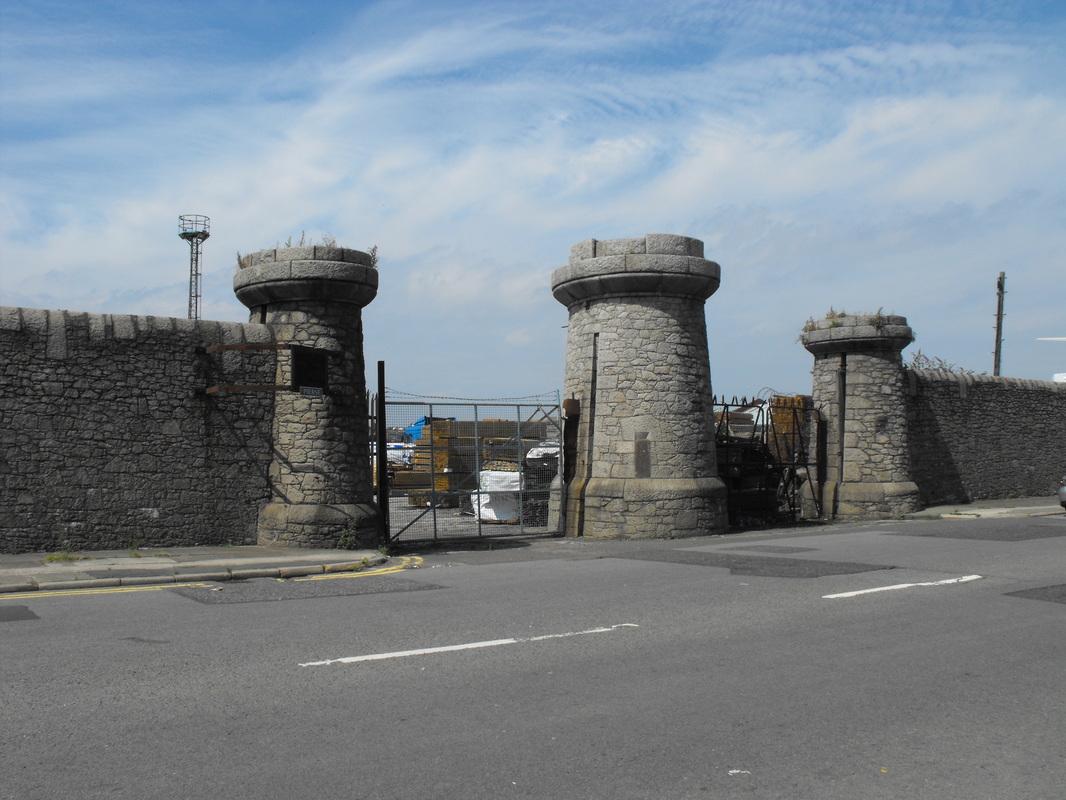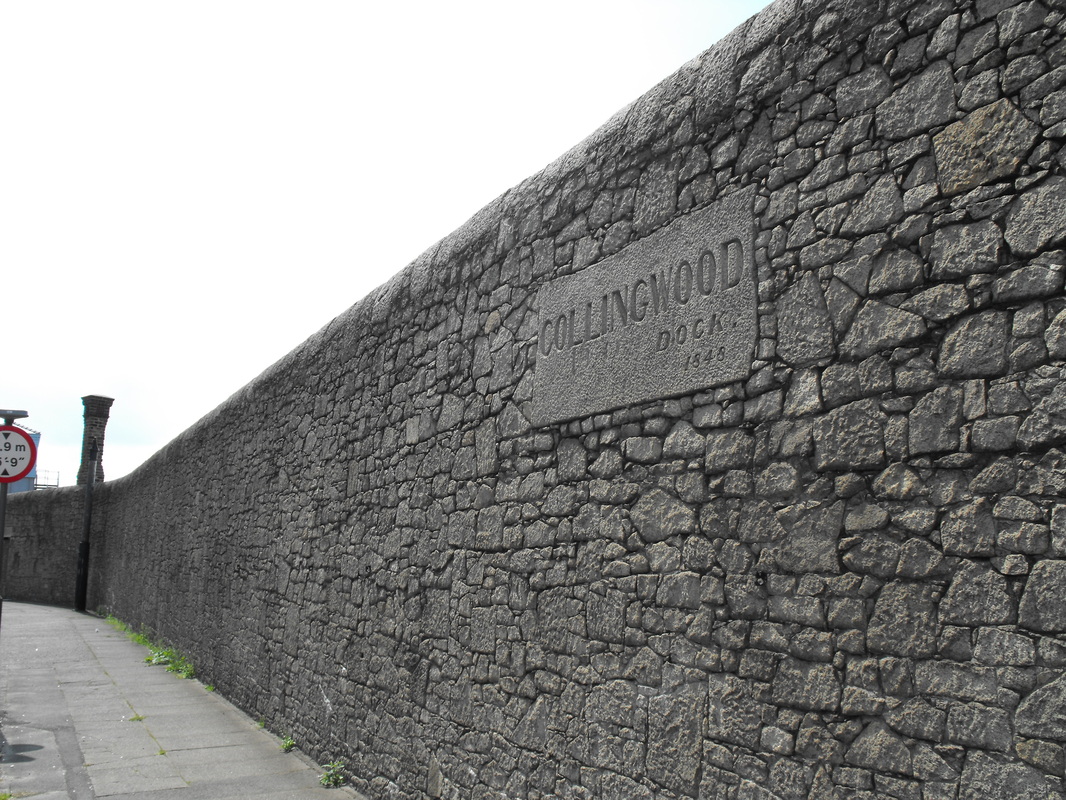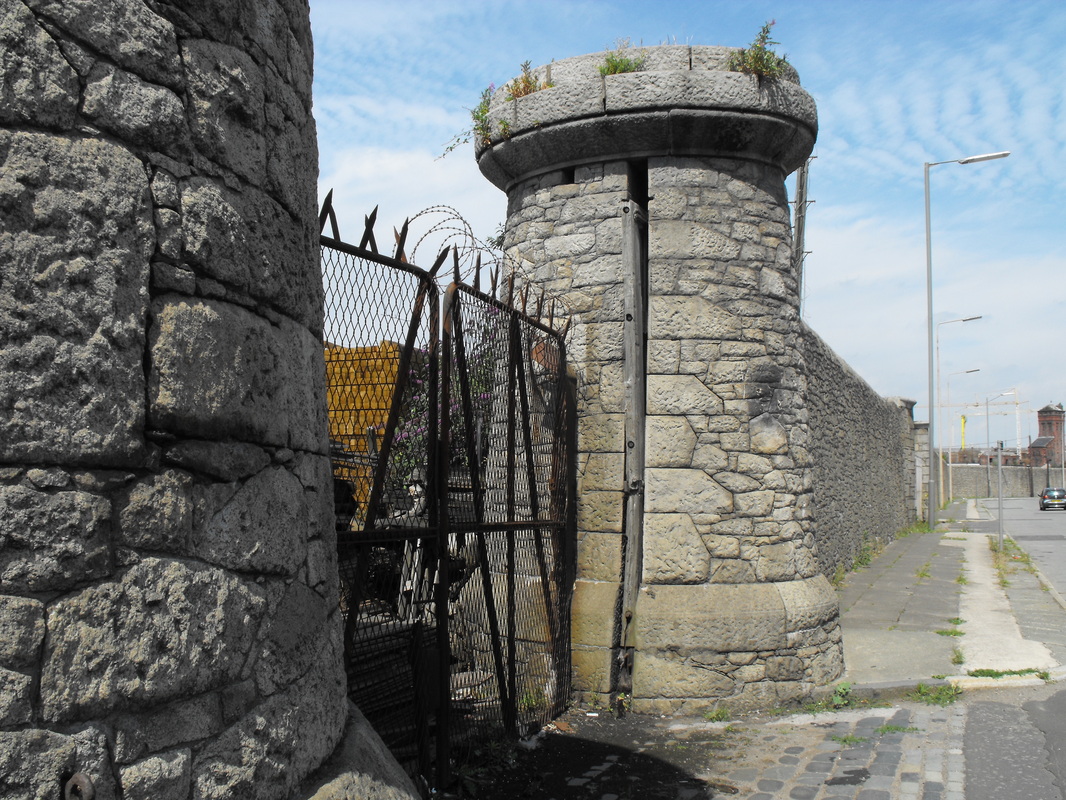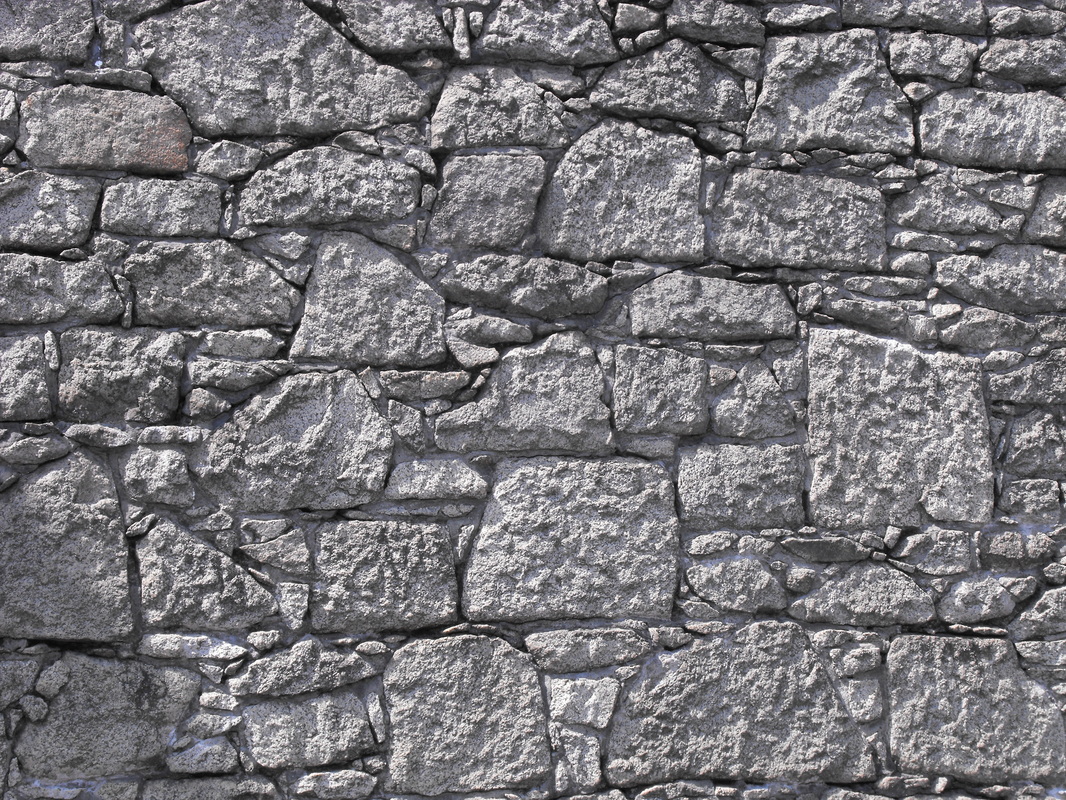The dock boundary wall enclosing this set of docks is about 5m high and differs from those constructed previously as instead of brick he used his ‘Cyclopean’ granite technique comprising finely jointed irregular shaped stones and flush rounded copings of random lengths. In total this type of wall extends over 1000m.
The dock has a double entrance with three tapering towers comprising a flanking pair of round towers and a larger central tower incorporating a shelter for watchmen or the dock police.
The towers have implied castellations above the cap and the central tower has arrow-slit like windows looking out onto the road and a small chimney. Deep slits are provided at the sides for sliding gates which would have slid out on rollers operated by counterweights closing into a slotted recess in the central tower.
Granite blocks bearing the name and date of each dock are set into the walls. It looks like the letters within the name were once inlaid with metal (possibly lead?) as I have noticed the remains of metal in some of the name plates. This may however been done in more recent times.
You cannot do anything else but admire the workmanship of the men who built this wall 165 years ago.
Although worn and weathered after 165 years the gate towers and walls are still an imposing sight.




 RSS Feed
RSS Feed
